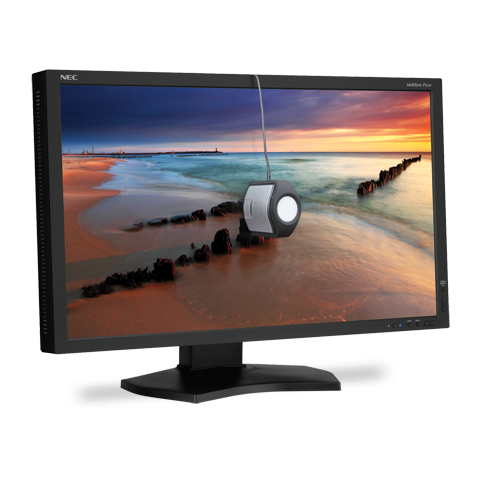
With the advent of digital imaging, the importance of the display has never been greater. Not only do we expect the display to be accurate, we expect it to stay that way, be easy to use, bright (too bright actually, but more on that later) and snappy, and able to properly reproduce a wide range of color values.
There are a multitude of technologies employed in display creation, but the starting point is the use of an IPS panel in the unit. Ever wonder if those budget displays are really any different than higher priced models? Are you are curious if your images are being properly displayed? The short answer is that you pay for what you get, and higher quality displays are worth every penny. Fortunately, you don’t have to break the bank for this quality, as you’ll read in this review as we look at the newly released NEC MultiSync P232W LCD Display.
NEC has a long tradition of leadership in the display industry, and this new affordable display is no exception. With a high-quality IPS panel, 1000:1 contrast ratio, a unique integrated ambient light sensor, and wide color gamut, this is a serious display for your digital imaging workflow. Described officially by NEC as a 23" Widescreen Professional Graphics Desktop Monitor, the name is apt, as the feature set is designed to meet the demands of creative professionals. Key features include a LED-backlit IPS LCD panel, 1920 x 1080 native resolution, 250 cd/m² brightness, plus both USB hub and DisplayPort, DVI-D, HDMI and VGA inputs. It supports internal programmable 14-bit 3D lookup tables (LUTs) for calibration, and its DisplaySync Pro controls allow for two computers with only one keyboard and mouse to share the display.
The built-in AmbiBright ambient light sensor automatically adjusts the display's brightness based on lighting conditions. One feature we found with a significant advance is the NEC MultiProfiler software, which provides complete control over five picture modes, including the ability to load any ICC profile directly into the monitorfor optimal color space matching. This is an important point since it lets users instantly pull up differing color spaces. So, if you are working in sRGB, you can view the image in that color space, switch to Bruce RGB, SMPTE, or Coated CMYK, and get a very reasonable soft proof approximation without affecting any settings in your host application or system preferences. While the Mac OS can't deliver 10-bit data to the display, the Windows OS is indeed capable. Now, if only Apple and other vendors such as Adobe could implement high-bit video, the true capabilities of displays like this could be realized.
We would be remiss if we left out color calibration. All displays can be calibrated, but generally with third-party solutions. NEC uses its own hardware and software solution. The software, SpectraView II, works best with a matching NEC unit, which some folks have nicknamed “the puck” due to the size and shape of the early units. Their SpectraSensor Pro unit is co-manufactured by venerable color management firm, X-Rite, and represents a faster, more accurate colorimeter than did past models. In use, color management (still an arcane science with as much myth as rigor) is a snap - just plug in the display, launch the software, and either use one of the presets, or create your own. We favor dimming the display to approximately 110 cd/m²; we like to use the Digital Photography preset, and then lower the brightness to a level that we feel best supports pigment inkjet printing gamuts, and save as our new modified default. A few minutes’ work at best, but worth the extra effort. Remember - a too-bright display often results in dark prints, so by dimming the display you don’t dim the image compared to the printed version.
We used the unit with a desktop computer for high-resolution digital imaging, and with a laptop for similar purpose using both HDMI, Display Port, and DVI connections, but also with the Oppo-103 and -105 Universal Audiophile 3D Blu-ray Disc Players for use with movie, still images, and internet playback via their HDMI ports. In all cases, the display always synced on the first connection, resolution was optimal, and color accurate and believable. Checking the display over a period of time with the SpectraSensor Pro for calibration revealed an almost immeasurable amount of drift, testament to the tight quality controls. If you are looking for an affordable, precision, accurate and consistent display with advanced features for serious work, then the NEC 23” NEC MultiSync P232W LCD Display comes highly recommended.
Harris Fogel and Nancy Burlan, posted 4/16/2013
For more information on the NEC PW 232 LCD Display visit: www.necdisplay.com
For more information on the SpectraViewII Color Calibration Kit visit: www.necdisplay.com



